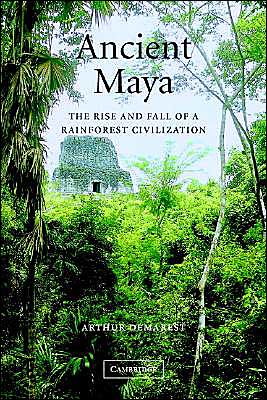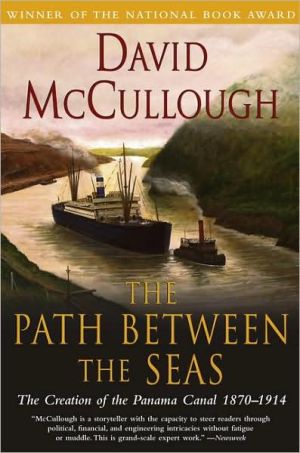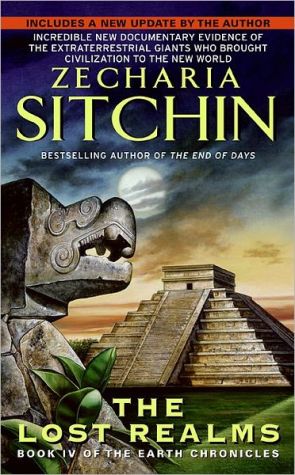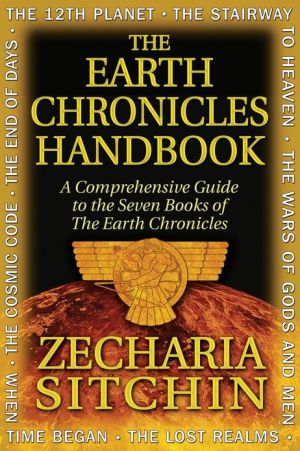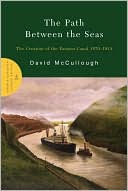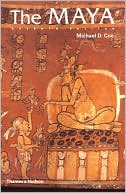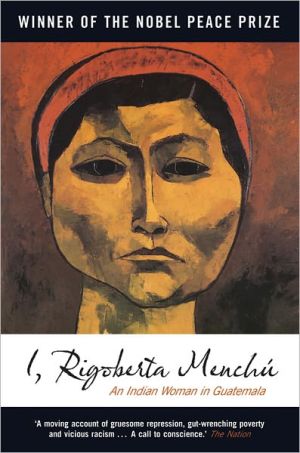Ancient Maya: The Rise and Fall of a Rainforest Civilization
Arthur Demarest brings the lost civilization of Maya to life by applying a holistic view to the most recently discovered archaeological evidence. His theoretical interpretation simultaneously emphasizes the brilliant rain forest adaptations of the ancient Maya and the Native American spirituality that permeated all aspects of their daily life. Drawing on data from the latest significant archaeological research in Central America, this new study appeals to those interested in the ecological...
Search in google:
Ancient Maya comes to life in this new holistic and theoretical study.
\ Cambridge University Press\ 0521592240 - Ancient Maya - The Rise and Fall of a Rainforest Civilization - by Arthur Demarest\ Excerpt\ \ \ \ \ 1 The mystery and the challenge of the ancient Maya\ \ \ \ Buried beneath the jungle vegetation lie sprawling ruined palaces of fine masonry architecture, still magnificent and beautiful despite the ravages of over a millennium. Scattered between the palaces rise great stone temples, some towering over the level of the dense jungle canopy of mahogany, cedar, and ceiba that reaches two hundred feet above the forest floor. On and between the palaces and temples lie scattered slabs of stone exquisitely carved with elaborate scenes and inscriptions (Fig. 1.1). On these eroded and broken monuments, the complex imagery that remains intact struggles against time to reveal its esoteric secrets. The scattered masonry and rubble of what were once the warm family homes of peasants and the elegant palaces of nobles are strewn for miles into the sea of jungle that stretches in all directions . . .\ \ Images and realities of the ancient Maya\ Such is the popular image, and the physical reality, of the ruined centers of the ancient Maya. From many centuries before Christ to about AD 900, the lowland Maya civilization achieved its apogee in the Petén forest of northern Guatemala and the adjacent portions of Mexico, Belize, and western Honduras, what today we call the "Maya lowlands" (Fig. 1.2). For over 1,500 years, this region was covered by a network of kingdoms dominated by "holy lords," sacred kings who were linked by complex ties of kinship, ritual, trade, and military alliance. Their political and religious centers included great acropoli of massed palaces, temples, stone tombs, and ballcourts. These centers of power and pageantry were supported by nearby populations of thousands of farmers who practiced a complex system of rain forest agriculture - a system which only now is beginning to be understood. Maya monuments displayed remarkable achievements in astronomy, mathematics, and calendrics, as well as an elaborate cosmology and a volatile and violent political history. The accomplishments of the ancient Maya still astonish us today and the decline and disappearance\ Figure 1.1 Fallen monuments at the Petén site of El Peru\ of this society continues to challenge the imaginations of the public and the efforts of scientists.\ For nearly two centuries we have been fascinated by the mystery and romance of the archaeology of the ancient Maya civilization. Nineteenth-century explorers found the Maya stone palaces, temples, ballcourts, and monuments buried beneath the dense vegetation of the jungle canopy (Fig. 1.3). The romantic popular scenario was completed by the ancient Maya's enigmatic, only partially deciphered, hieroglyphic-inscribed monuments, and by their royal tombs filled with treasures of art and precious jade. Then we have the evidence, much debated, of a sudden and unexplained collapse for this sophisticated, literate civilization. The mysteries of ancient lowland Maya civilization have inspired the many "lost jungle cities" of fiction and film, which combine Classic Maya features with an incongruous montage of stylistic elements from other cultures.\ Many essays and texts on Maya archaeology begin with a debunking of these melodramatic renderings of ancient Maya civilization and its mysteries. It is true that the popular obsession with the mysterious elements of Maya archaeology has led to wild versions of the Maya past. Some have linked the ancient Maya with the lost tribes of Israel, colonists from the sunken continents of Atlantis and Mu, extraterrestrial visitors,\ Figure 1.2 Map of eastern Mesoamerica (drawn by Luis F. Luin)\ or presented millennial predictions from the Maya calendar of the future as variously heralding a "New Age" or the Apocalypse. Recent theory in the social sciences has emphasized that the ancient past is a "text" into which those in the present "read" their own meanings and reflect their own concerns (e.g. Hodder 1986). Such reflexive uses of the past are certainly characteristic of Maya archaeology and its popular representations. Lost Maya cities, jungles, secret scripts, and tombs have provided the raw material for a wide range of colorful popular interpretations that\ Figure 1.3 Catherwood drawing of the ruins at Palenque, Chiapas (from Stephens 1841)\ sometimes have little or nothing to do with the ancient Maya and, in some cases, have been quite condescending toward their modern oppressed descendants (Montejo 1991; Castañeda 1996; Hervik 1999).\ Still, while scholars may be amused or offended by these misuses of the Maya, even careful professional studies usually portray the archaeology of the Maya as a series of challenges or problems, many of those enigmas broadly similar to those addressed by popular presentation and speculation. Perhaps beneath the public's naïve fascination with the Maya there always has been an intuitive grasp of some elements which are the genuine intellectual challenges that Maya archaeology presents to social science.\ One such central challenge has been the very presence of this high civilization in a "rain forest" (technically not a true rain forest but a "humid subtropical forest"). In general, jungles have been perceived by the public as the realm of less complex peoples - "tribes" or even "savages." Theory in the social sciences has differed from this popular perception more in style than in substance, since scholars, too, have been puzzled by the presence of this complex society in a rain forest environment. Historians and archaeologists traditionally had looked to highland basins or to desert river valleys for the heartlands of civilizations. Such environments had the proper settings to apply the alleged "prime movers" for the development of complex society; that is, settings with factors that demanded centralized management, such as irrigation, conflict over limited land or water, control of trade routes, and so on. The rise of civilization in a rain forest was baffling, given the few navigable rivers, no obvious need for irrigation, and no apparent need for centralized forms of agricultural management. The rain forest setting of the Maya continues to challenge our interpretations and an understanding of this environment is central to any accurate view of Maya civilization and its long history.\ Other major aspects of research on the ancient Maya also began with initial impressions that were unfocused, but nonetheless insightful. The popular appeal of Maya archaeology has always been enhanced by the beauty and complexity of the vast corpus of ancient Maya art, including artifacts, murals, monuments, and architecture. As scholars began to interpret Maya iconography, hieroglyphics, and art, they also were seduced by the complexity of Maya art and the sophistication of their calendrics, mathematics, and cosmology. As we shall see, this vast investment of ancient lowland Maya society in monuments, architecture, and other manifestations of elite culture may reflect the distinctive political structure of this civilization and the "cultural capital" of its elites (Bourdieu 1977). Again, beneath the romantic images lie basic truths about the intellectual challenges presented by our "readings" of this ancient society.\ Another element in the popular fascination with the ancient Maya is the mystery of the sudden "collapse" of their greatest cities in the southern lowland Petén rain forest. The first explorers found massive acropoli of public architecture and extensive domestic ruins that had been long abandoned. Other sites were only occupied by small groups of Lacandon Maya, who offered incense and prayer before the remnants of the ancient temples, stelae, and altars. The mystery of the abandonment of these ancient Maya cities has spawned several generations of speculations and theories on its causes - ranging from epidemics and earthquakes to elite decadence, peasant revolts, and foreign invasions.\ The enigma of the decline and abandonment of the Maya cities of the Classic period (AD 300 to 900) not only fed public fantasy, but also helped stimulate a century of serious archaeological research. The controversy on the nature, causes, and even the existence of the so-called "Classic Maya collapse" remains hotly debated.\ Some presentations of the "Classic Maya collapse" have tended implicitly to denigrate the later achievements of the Postclassic kingdoms or even the continuing vigorous cultural traditions, resistance, and activism of the millions of Maya peoples living today (see Montejo 1991; D. Chase and A. Chase 2004; Demarest and García 2003; P. Rice et al. 2004). It is critical to circumscribe and define what exactly happened to many of the lowland Maya cities of the Classic period, rather than to speculate vaguely on some general "collapse" of the Maya.\ In this text we will review the interpretations of this complex phenomena, the evidence, and the beginnings of a consensus on some issues. In some parts of the southern lowland region of the Maya world, the decline of the Maya cities at the end of the Classic period was a relatively rapid process with a dramatic drop in the level of political complexity and drastic population decline. In other regions Maya states were more gradually transformed into a different form of society. In the past decade, approaches to understanding the mystery of the decline of the jungle cities of the Maya have moved beyond simplistic and uniform characterizations. The end of Classic period lowland Maya civilization has proven to be one of the most exciting aspects of Maya archaeology for scientific studies that touch upon universal questions about the causes of the decline of complex societies. Despite the existence of exaggerations and wild theories, scholars should concede that popular perceptions helped to propel scientific research on the collapse in directions that have revealed the central, distinctive themes of Classic Maya civilization.\ \ True mysteries and central themes in Maya archaeology\ Three themes will be emphasized in this brief overview of the nature of ancient lowland Classic Maya civilization. One is the issue of the fundamental connection of all aspects of Maya society to its ecological and economic adaptation to the rain forest environment. Up until a few years ago, international conservation agencies had argued that such environments can only be saved by holding human populations down to a very low level. Contrary to this modern wisdom, the ancient Maya raised a remarkable, complex civilization in the Petén rain forest with populations in the millions, and they sustained it for nearly two millennia. What were the secrets of the ancient Maya adaptation to the rain forest? How did they achieve a sustainable rain forest civilization? The answers are complex, but recent studies have begun to reveal the nature of Classic Maya ecological adaptations. In turn, these new characterizations of Maya ecology and economy have implications for understanding their volatile and dynamic political structure, their vast investment in political ideology and ritual, and the inherent instability that facilitated the ninth-century decline of many of their cities in the lowland regions.\ Another central feature of Maya archaeology, also reflected in public interest, is the vast and complex corpus of Maya art, monuments, and hieroglyphic inscriptions, and the elaborate ideology that it presents. The complexity of ancient Maya astronomy, astrology, calendrics, and cosmology has mesmerized modern scholars and devoted lay followers. Yet this emphasis on the detail of Maya esoterica has sometimes lacked any real grasp of the fundamental nature of the Classic Maya investment in ideology. With the decipherment of many inscriptions, more systematic study of political history, and comparative study to parallel institutions in other civilizations, we are now beginning to discern the political rationale in the mystical haze of Maya cosmology and elite culture. Later we will explore some aspects of Maya religion and political history, and how Maya elite dependence on ideology and imagery for power can be related to their unstable political dynamics.\ Finally, a third theme of intellectual import, as well as popular fascination, is the long-standing mystery of the so-called "Classic Maya collapse." Later we will review the rapid decline of many Maya cities in the southern rain forest zone of the Maya civilization. Recent researches have demonstrated the great variability of Classic Maya civilization in art, architecture, economics, and political developments. It is not surprising, then, that we have discovered variability in the regional manifestations of the ending of this Classic Maya culture. Still, some common processes and structural features have begun to emerge in the histories of the Maya states of the different regions of the lowlands between AD 750 and 1000. These parallels will also be linked to the other two themes: the Classic Maya rain forest adaptation, and their rulers' dependence on ideology for political power.\ Modern scholars, who have had the benefit of hindsight and a century of new evidence, should concede the perceptiveness of some of the early explorers and the public on these "mysteries" of the Maya civilization. Ethnocentrism, and reflexive and personal romantic readings of the ancient Maya ruins, abound both in early scholarship and even in recent popular presentations. Yet each of the popular "mysteries" did arise from the underlying problems that still challenge archaeology. The scientific exploration of these questions has highlighted the very areas where Maya archaeology can make a general contribution to social science. Two centuries of investigation of these themes has made Classic Maya civilization somewhat less mysterious. Instead, Classic Maya archaeology has become a source of potential insights into the general study in the social sciences of the nature, the rise, and the struggles of all civilizations. In our own subjective, personal readings of the story of this civilization, which was very complex and very different from our own, we as readers can also find our own reflexive philosophical meanings - speaking perhaps not so much about the ancient Maya as about ourselves.\ \ \ \ 2 Background: geography, chronology, and theoretical perspective\ \ \ \ Geographic setting\ The setting of Maya civilization is the eastern portion of what archaeologists call "Mesoamerica." Geographically, Mesoamerica is simple enough to define. It covers most of what is today Mexico and the countries of Upper Central America: Guatemala, Belize, El Salvador, and western Honduras (Fig. 2.1). Anthropologists and archaeologists use this designation to refer to a "culture area," a region of similar culture traits and features. For several millennia the various societies and civilizations of most of Mexico and Central America were in constant interaction through trade, migration, conquest, and other contacts. These interactions, as well as some common linguistic and ethnic origins, resulted in a sharing of many features across this vast and geographically diverse region.\ Some of the features traditionally listed as characteristic of the "Mesoamerican culture area" (e.g. Kirchoff 1943; Helms 1975) included specific features, such as forms of a game played with a rubber ball in a rectangular court and "codex" books made of sheets of bark paper or deerskin coated with stucco and folded like screens. More important common traits were beliefs and concepts shared by the societies of Mesoamerica, such as the ritual importance of blood offerings and human sacrifice. Another trait was a shared concern with astronomical knowledge, and the recording and worship of the calendric cycles of the sun, the moon, the planet Venus, and the stars. Most societies in Mesoamerica also shared a common diet dominated by maize corn, beans, squashes, and chiles. Maize was ground on stone querns (metates) with stone hand pestles (manos) and then either grilled as flat tortillas or steamed or roasted in the familiar thicker tamales. (The latter were more common in Classic Maya cuisine.)\ Being defined by cultural traits and traditions, the exact boundaries of Mesoamerica as a "culture area" shifted over time with the shifting distribution of those traits, so archaeologists debate its precise limits (Helms 1975; Boone and Willey 1988; Porter-Weaver 1993). In general\ Figure 2.1 Mesoamerica, showing major geographical features (drawn by Luis F. Luin)\ Figure 2.2 Map of Mesoamerica showing major cultural macro-regions (drawn by Luis F. Luin)\ its western and northern boundary is drawn somewhere across the deserts of the northern part of the Central Plateau of Mexico. The southern boundary of Mesoamerica is traced from northwestern Costa Rica up to western Honduras, where this complex of shared features and concepts begins to become diffuse in the archaeological and ethnohistoric record (Fig. 2.2).\ \ \ \ \ © Cambridge University Press
1The mystery and the challenge of the ancient Maya12Background : geography, chronology, and theoretical perspective83The exploration and archaeology of the Maya : a brief history314Obscure beginnings and the preclassic florescence535The splendor of the classic Maya florescence in the lowlands896Settlement and subsistence : the rain forest adaptation1137Classic Maya economics1488Religion and ideology : beliefs and rituals of the theater-states1759Classic Maya politics and history : the dynamics of the theater-states20810The end of classic Maya civilization : collapse, transition, and transformation24011The legacy of the classic Maya civilization : postclassic, colonial, and modern traditions27712The lessons of classic Maya history and prehistory294
